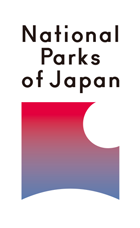- MOE
- National Parks of Japan
- Ise-Shima National Park
- Efforts
Efforts
Alien Species Control
Set in the south of Shima City, the Wagu-Oshima Island is populated by colonies of seaside plants such as Crinum asiaticum L. var. japonicum and is an uninhabited island listed as a Special Natural Monument of Mie Prefecture. Recently, the invasion by Yucca (Spanish dagger), an alien species, has been identified as one of the greatest threats to the island's native species. To exterminate the alien Yucca, the Ministry of the Environment has been working in cooperation with the local people.
Restoration Efforts of Seagrass Beds
The phenomenon of Isoyake (rocky-shore denudation) prevents fish and shellfish from growing well. To restore the seagrass beds, the larva of Eisenia bicyclis, a type of algae, is harvested over fieldstones. Beginning in 2005, as a countermeasure for Isoyake causing a decline in seaweed, the Toshi Branch of the Association of Toba-Isobe Fishery has been making efforts to restore the seagrass beds in the adjacent waters around Toba City and Toshi-jima Island. Today, similar efforts are underway by the Fisheries Cooperative Associations in Shima City and Minami-Ise Town.
Tidal Flat Restoration Efforts

Tidal Flat Restoration Efforts (Tidal Flat Observatory Meeting)

